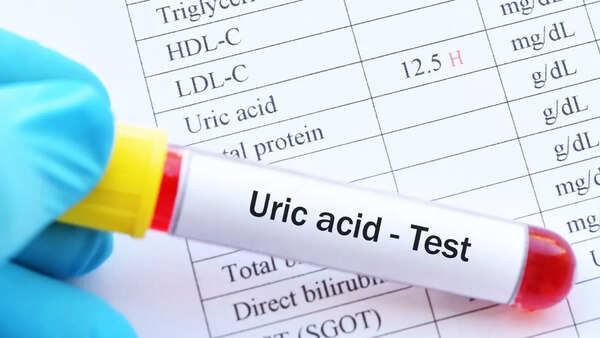For years, uric acid has been mainly associated with drop, a painful shape of arthritis. But recent research has started painting a more complex image. It turns out that uric acid can quietly play a more important role in some of the most serious health problems today: sudden heart attacks and metabolic syndrome. It is not the casualness. It is a call to look more deeply in the biochemistry of the body and to rethink what has been dismissed as a minor laboratory result.It is commonly said that uric acid is only a by-product of the Metabolism of the Purine, which the kidneys eliminate. It’s true. But there is more in history. When the levels are high (called hyperuricemia), it begins to behave as an inflammatory chemical.Researchers have observed that high levels of uric acid can trigger oxidative stress in blood vessels. This inflammation can silently damage the endothelium (the inner mucosa of the arteries), preparing the ground for heart disease long before the appearance of symptoms. So, it is not only a question of hurting the joints, this silent accumulation could also weaken the heart.
What connects uric acid to sudden heart attacks?
The common belief is that heart attacks come only from cholesterol and blocked arteries. Although this is partly true, studies now show that people with high uric acid are at a significantly higher risk of sudden heart events, even if their cholesterol levels seem well.

Uric acid is a natural waste that the body produces after decomposing the purines, which is in certain foods and drinks.
Here’s how:
Uric acid can cause microvascular diseases, a condition where small blood vessels become steep or shrinking. These tiny blockages often do not appear in regular analyzes but can die of hunger from the heart of oxygen. The result? A sudden heart attack without prior warning. Researchers Even noted that high uric acid was independently associated with the risk of heart attack, especially in people who seemed to be metabolically healthy otherwise.
Metabolic syndrome: the complex puzzle in which uric acid could adapt
Metabolic syndrome is a group of problems: high blood sugar, belly fat, high blood pressure and abnormal cholesterol. For a long time, uric acid was considered a “passenger” on this image. Now experts think it could drive the car.Dr Richard JohnsonA renal researcher from the University of Colorado, suggested that uric acid could trigger insulin resistance, a key step in the development of metabolic syndrome. This means that until blood sugar begins to climb or increase the weight, uric acid can calmly turn the switches in the background, disturbing the way the body treats food and stores energy.

One of the most classic symptoms of high uric acid is sudden and intense pain in the big toe – a revealing sign of drop.
What causes an increase in uric acid?
It is often blamed with red meat, crustaceans or sugary drinks. It is not incorrect, but it is only part of the image.
- Dehydration: even slight dehydration, especially in hot weather or after exercise, can increase the levels of uric acid.
- Discussion or fasting of crushing: the body, when hungry, quickly breaks down the tissues, leading to more purines and uric acid.
- Sleep disorders: Conditions such as sleep apnea can increase oxidative stress and disrupt the metabolism of uric acid.
- Hidden fructose: Many packaged foods (even those labeled healthy) contain corn syrup with high fructose content, which quietly increases uric acid.
Thus, sometimes uric acid is not only a question of diet; It is also the way the body is stressed, sleep management and how hydration is balanced.
Simple ways that really help
Although drugs such as allopurinol and fébuxostat are often prescribed, lifestyle adjustments can operate in tandem, sometimes even preventive.
- Hydration therapy: Start the day with ordinary water (not lemon, not apple cider vinegar) gives the kidneys a clean thrust to rinse uric acid.
- Sweet physical activity: Walking after meals, especially dinner, turned out to help manage uric acid and improve insulin sensitivity.
- Foods rich in magnesium: pumpkin seeds, spinach and almonds help balance uric acid and reduce inflammation.
- Use salt wisely: Too much sodium increases uric acid retention. But the replacement of salt with ingredients rich in potassium such as coconut water or bananas can support excretion.
- Nocturnal brewers: slow breathing or meditative breaks by 10 minutes before the bed has proven to reduce the points induced by stress in uric acid, indirectly helping cardiovascular health.
Rethink the “normal” uric acid ranges
Laboratory reports consider uric acid levels up to 7.0 mg / dl as usual. But according to some cardiologists, the heart can prefer it closer to 5.5 mg / dl. Thus, even if a so -called “normal” laboratory report, it could be too high for a person at heart risk or a metabolic imbalance.By looking at uric acid not only as a number, but as a marker of the underlying metabolic tension, can be a more intelligent approach. It is not a question of panicking on each decimal, but of understanding its role in the situation as a whole.(This article is for information only. It does not replace professional advice, diagnosis or processing.



